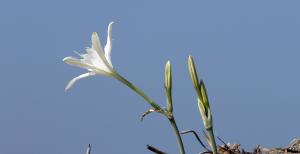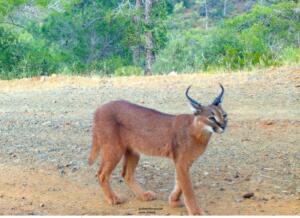
Grants
Biodiversity conservation and ecosystem services
Post-fire Ecological Restoration
170,000 ₺ awarded
Status: Completed
Project duration: November 2022-October 2023
Challenge
Wildfires are increasing worldwide due to warmer and drier conditions as direct consequences of climate change. In July and August 2021, more than two hundred wildfires burnt 1,700 square kilometres of forest in Turkey’s Mediterranean Region in the worst-ever wildfire season in the country’s history. Exactly one year later, in 2022, the region caught fire again. The situation of wildlife in the region became an urgent issue for sustaining the wildlife through restoration measures.
Solution
This project will investigate the current situation of wildlife in the Marmaris region after the mega-fires in July 2021 and 2022. The sweetgum forests of the Marmaris-Bördübet Wildlife Development Area (YHGS) are home to stable wildlife populations such as the Brown Bear (Ursus arctos), Caracal (Caracal caracal), and Otter (Lutra lutra); and have the potential to provide an alternative habitat to the Wild Cat (Felis sylvestris) population which lost their main one also because of the fires. Once the initial assessment is completed, an Ecological Restoration Process considering the post-fire vegetation, wildlife and ecosystem functions in an integrated way will be drafted, which will serve as an official cooperation protocol including relevant decision-making public institutions and organizations.
Project’s deliverables
- Ecological Restoration Design Guide: To address the problem from ecological principles, our project will initiate an Ecological Restoration Process that will positively contribute to the Secondary Succession Development Phases of the Bördübet Wildlife Development Area. This process, which will include the steps of post-fire restoration, regeneration, afforestation, wildlife and ecosystem functions in an integrated way, should be as slow, patient and moderate as possible. A guide document that will focus on the implementation and monitoring of a 5-year natural restoration process in the first place.
- Ecological Restoration Implementation Cooperation Protocol: A 5-year cooperation protocol with the General Directorate of Nature Conservation and National Parks, the institution directly responsible for managing the study area, to implement the ecological restoration process in the field.
- Mega Fires and Ecological Restoration Workshop: At the end of the project, we will organize a workshop with approximately 50 different stakeholders in the study area to discuss progress on target species and ecological restoration designs and to establish cooperative relationships.
Update March 2024: See mini impact update with fantastic Caracals images here.
Read the report on the Ecological Restoration Guide after Forest Fires in Protected Areas here.
About the organisation: NATURA—Nature and Culture Conservation Association carries out activities to protect sweetgum forests by creating a corridor between them, assembling fragmented forests, and reversing their destruction. Sweetgum forests are found only in Southwest Anatolia and are on the verge of extinction due to fragmentation.

